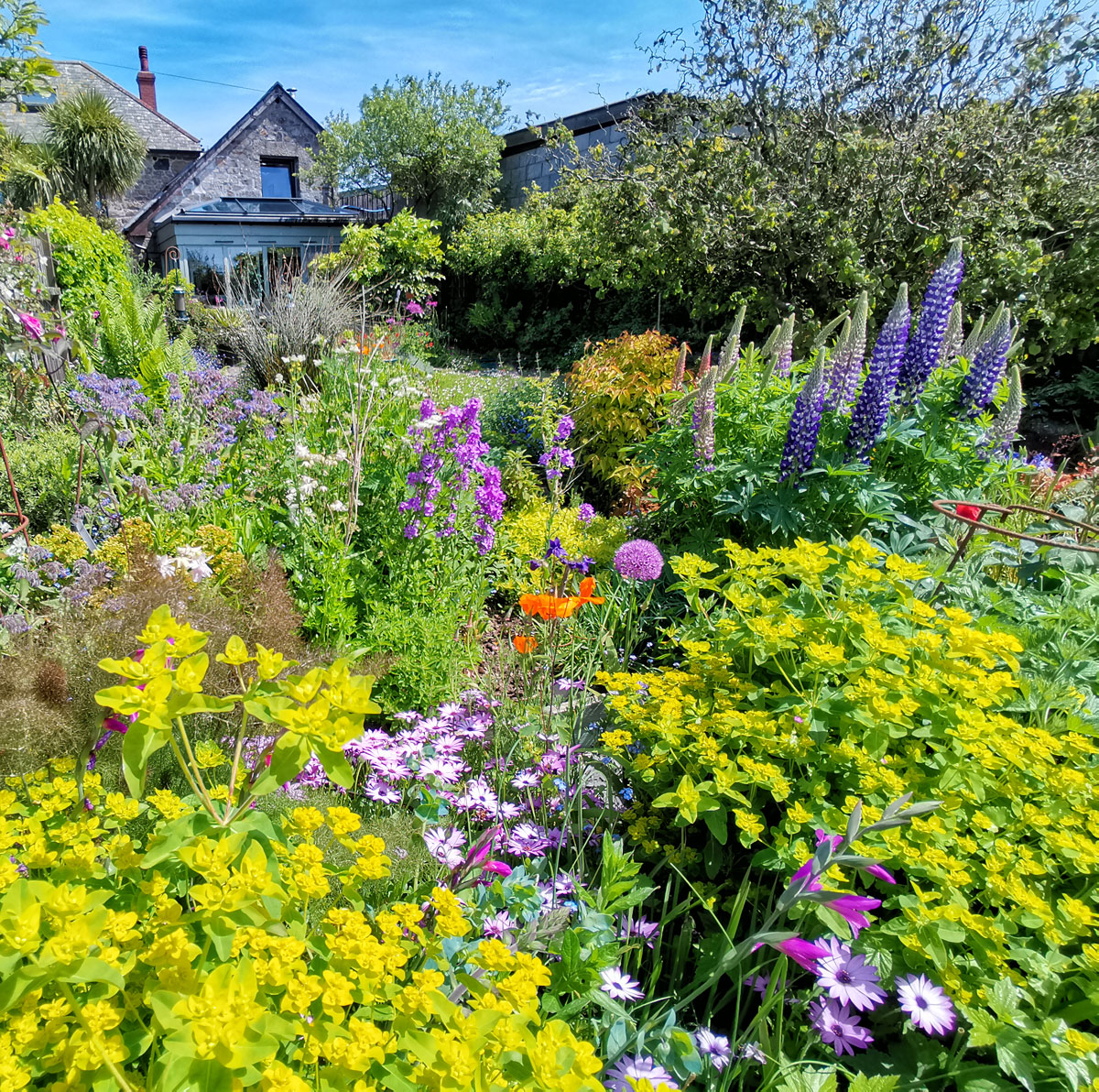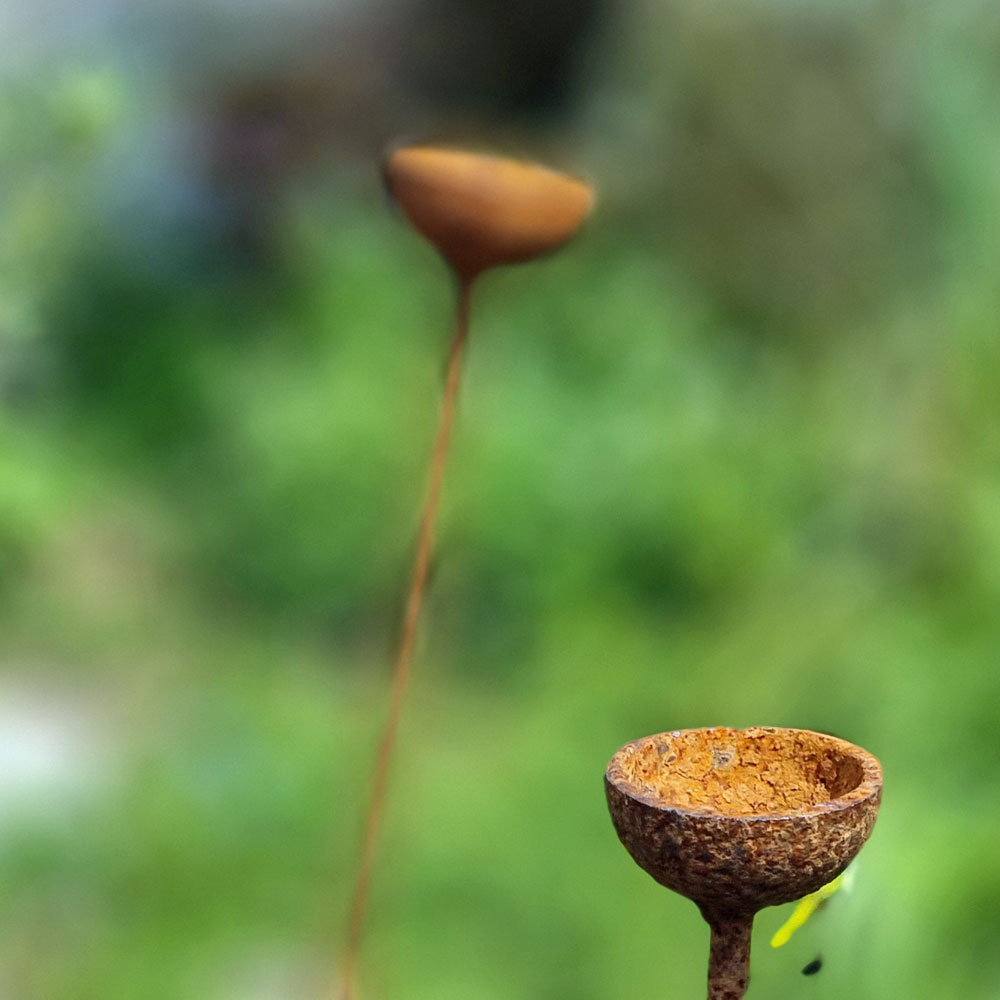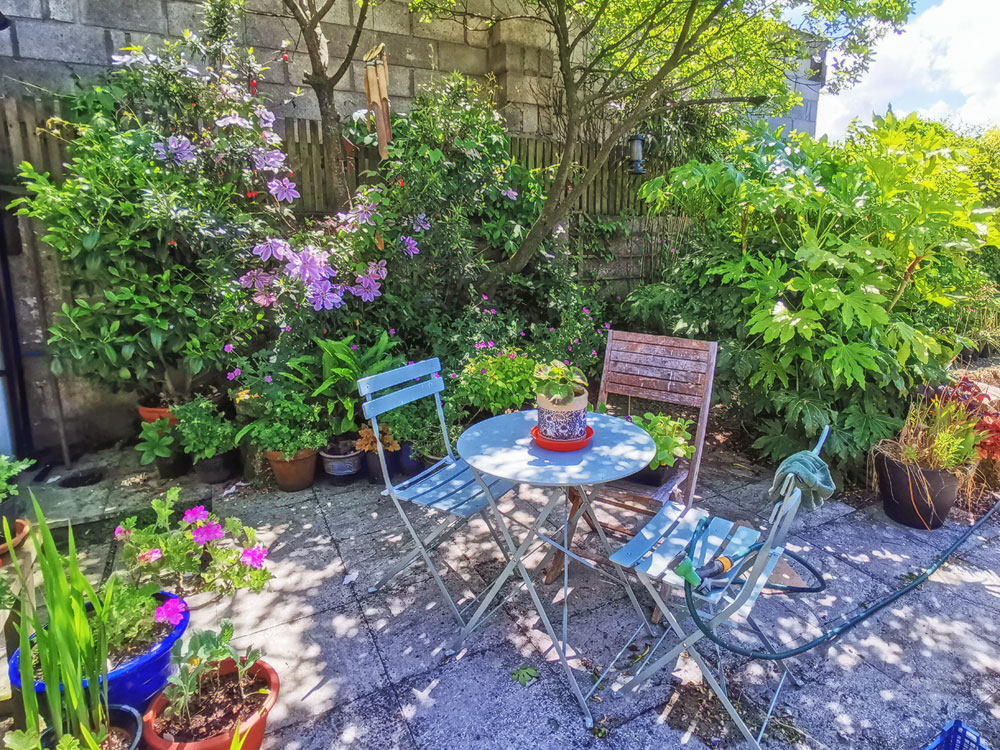I mentioned in my SOS post a couple of weeks ago that my garden had developed into a typical cottage garden style without my intention. It got me to wondering what IS a cottage garden, so I did a bit of research.

Seemingly it’s a garden with spontaneity and irregularity, curves and natural layouts rather than symmetrical patterns and rigid lines. A blend of flowers, herbs and wildflowers for a display of colour and texture. An informal space with meandering paths and unexpected views and intimate nooks with arches and seating where you can sit back and enjoy the garden. Beauty and tranquillity to provide a perfect retreat for relaxation and meditation.

A cottage garden has tightly packed borders with dense foliage and an abundance of flowers, typically plants that will increase year after year.

Encourage wildlife by introducing nectar rich flowers, bird baths, bug hotels and embrace disorder as the garden evolves. Dense planting and a variety of flowers all attract pollinators, birds and beneficial insects, creating a balanced ecosystem.

So what are typical cottage garden plants?
- Perennials: Delphiniums, foxgloves and hollyhocks add height and drama. Hardy geraniums, campanulas, dianthus provide ground cover and continuous blooms
- Shrubs: Roses (of course) for classic beauty, fragrance and romance, hydrangeas, lilacs and spireas to add structure and seasonal interest.
- Annuals: Cosmos, marigolds and nasturtiums all provide vibrant long-lasting flowers and colour.
- Herbs: Lavender, rosemary and sage look lovely and are also useful. Grow vegetables and fruit and edible flowers too.
- Bulbs: spring flowering daffodils, tulips, hyacinths, irises, camassias and alliums. Autumn flowering crocosmia, gladioli and the ubiquitous dahlias
Tall late spring flowers such as alliums, foxgloves, gladioli and camassias can help bridge the gap between early spring flowering bulbs and the start of the perennials.

A cottage garden sounds like it might require a lot of maintenance, however once it is established it more or less looks after itself. Prune shrubs regularly, deadhead flowers to encourage more growth (leave some towards the end of the season for the birds or for plants to self-seed or for winter interest. ) Keep on top of weeds and ensure consistent watering especially in dry spells. Use organic fertilisers or compost to keep the soil healthy and the plants vigorous.


It takes time to create a cottage garden. Shrubs and perennials form the backdrop and you can divide or take cuttings of plants to spread around the garden. Fill spaces with annuals and bulbs to create seasonal interest. Add personality with vintage signs, sculptures and quirky accents.

I have been creating my garden since 2017 (I waited a year to see what was already growing there before I did anything else) and over the years it has changed as I came to understand the soil and the climate and the pests. Plants have come and many have gone. I don’t grow delphiniums or dahlias or many roses. Instead I have aconitum, geums and aquilegias.

My herbs are grown mainly in raised herb beds, though origanum and rosemary can be found in and around the garden. Native wildflowers are encouraged, though often need editing. I have a lot of daisies, both common and fleabane which definitely spread themselves about.

I also have shady areas which require different types of planting: here ferns, hardy geraniums, astilbe, heucheras, pulmonaria, bugle and hellebores and fuchsias play their part.

And as I am a fan of naturalistic planting I have introduced grasses and poppies and thalictrum (though I didn’t do my research well enough when I went for ‘Elin’ and ‘Anne’ as they grow 2-3m tall and in a windy summer need staking).
My garden is a bit chaotic (I tend to allow self-seeders to find their happy place) and I am definitely not keeping on top of the weeds this year or the S&S. I have a lot of stone – boundary walls, large heavy stones dividing spaces and a very large flat stone which was once in the centre of the lawn.





What a fabulous post. I love it and the whole idea of time and variety – what a beautiful garden 👋👋👋👋
Thank you. Glad you enjoyed the garden.
Well, your description of a cottage garden makes me wish we had one like that too! And I have to say that your 2021 spring garden was a delight to the eye. Comparing 2016’s garden to how it looks now, I can see you’ve turned your garden into a tranquil and lovely place.
I suppose we get the gardens that our climate and location dictate. Much as I would have liked to have created a more Mediterranean style garden with South African and Australian plants I am too exposed to the winds from the Atlantic (my fault for choosing a house on one of the highest hills in Cornwall) and my soil is rich and stony and it is far too wet in the winter months. New Zealand plants like it though!
Amazing the wonders you’ve wrought in 7 years. Well done.